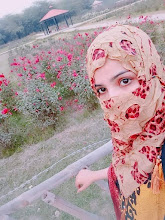Types of lens mounts and adapters
Lens mounts are sophisticated interfaces between cameras and lenses to ensure a secure attachment between them, thereby enabling electronic communication between the two. Photographers, filmmakers, and photo enthusiasts often use different types of lenses and adapters to capture a wider range of images and video footage. It enables them to be versatile in their approach, while never missing out on the right opportunity when it presents itself.
Users can leverage the latest DSLR camera in India, such as the Canon EOS 90D, and opt for a wide range of previously owned lenses or borrowed equipment for projects. They are also effective in enabling photographers to upgrade their lenses or adapt multiple lenses for photo shoots, travel shoots, and testing purposes.
Exploring the different types of lens mounts
Modern lens mounts are bayonet type, while users may also leverage screw-thread types or friction lock types for older lenses. A range of electro focus mounts are available in the market, enabling power to flow from the body to the lens enabling digital features. EF and EF-S mounts are widely popular in India, as being sophisticated mounts that offer flexibility to photographers.
F and Micro Four-Thirds (MFT) mounts also enable photographers to explore lenses outside their field of purview. S-mounts can also be used for smaller size cameras for micro-photography applications. Based on the type of photograph needed, and the specific application, photographers can select the best lens mounts for their projects.
Understanding the role of various adapters
Adapters are unique photography tools driving compatibility between lenses and bodies through their customized ends. While they may cancel some of the inherent digital features of your camera, they offer flexibility and versatility for some of the most complex shoots. Buyers can opt for passive adapters, which simply create a passive connection between the camera and the lens while disabling access to electronic lens features.
Alternatively, modern adapters enable a synchronous connection between cameras and lenses while adding several key digital features as well. It is important to review different adapters based on the flange focal distance (FFD), which is the distance from the lens mount to the sensor (or film) plane. Users can also opt for focal reducers that can help improve optical transfer function (OTF).
Selecting the right mounts and adapters
While some photographers may use cameras with interchangeable camera lenses, many others may prefer leveraging mounts and adapters to capture specific looks within shots. With every new project, photographers and filmmakers must select the right cameras, lenses, and adapters to get the right shot.
From field analysis to shot set-up, there are several non-camera related tasks that need extensive time and attention, which is why streamlining the technical camera portion of mounts and adapters is essential. Whether you need to translate full frame to APS-C and micro four-thirds, or need to capture a wider frame, you should focus on selecting the right combination of mount and adapter for your preferred camera body.
from Everyone's Blog Posts - Fashion Industry Network https://ift.tt/3eIC16t



No comments: